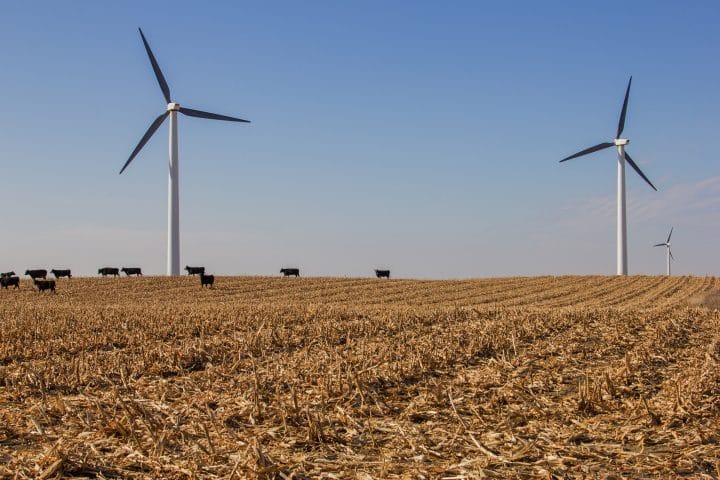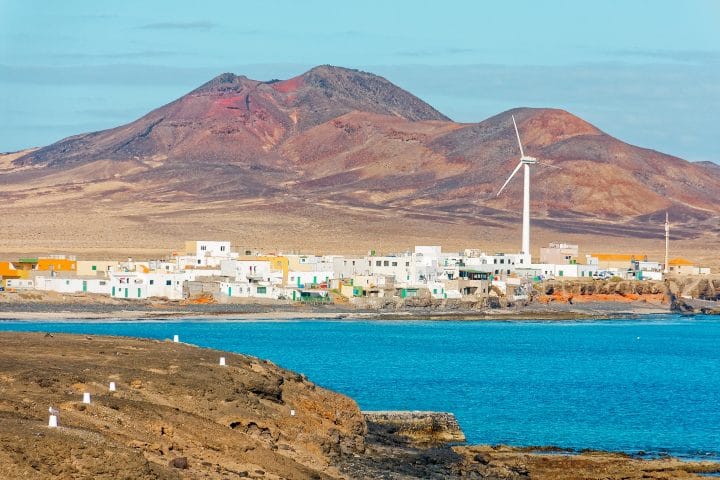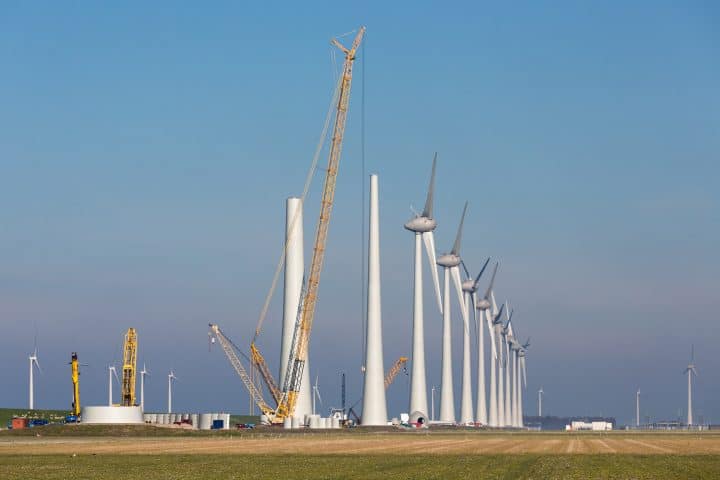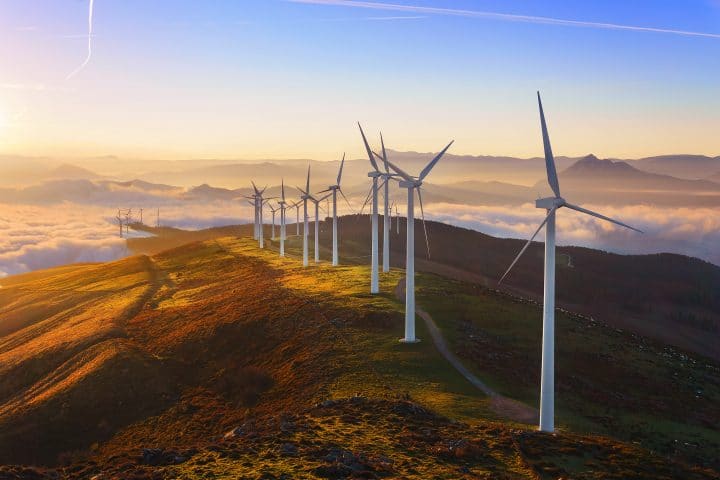This article explores the different advantages and disadvantages of wind energy. Discover what makes the wind one of the most popular renewable energy sources in use today. Learn about the controversy that surrounds the use of wind turbines and whether this is justified.
Advantages of Wind Energy
The wind has a wide range of benefits and has been used by man for thousands of years in sailing and milling. Nowadays, one of the main uses of wind is for the production of clean and renewable electricity. Let’s jump right in and take a look at the different advantages that wind energy has.
1. Wind Energy Is Renewable & Sustainable
The wind is both a renewable and sustainable resource. Unlike reserves of fossil fuels (such as coal, oil, and gas) it will never run out. This makes wind turbines a viable option in helping to meet our future energy demands.
2. It’s Good For The Environment
Wind energy is one of the most environmentally friendly energy sources known to man. This is based on the simple fact that wind turbines don’t create pollution whilst generating electricity.
Most non-renewable energy sources need to be burnt. This process releases gases such as carbon dioxide (CO2) and methane (CH4) into the atmosphere. These gases are known to contribute to climate change. In contrast, wind turbines produce no greenhouse gases when generating electricity.
We should note that both noise and visual pollution are two environmental disadvantages of wind turbines. However, these factors don’t have a negative impact on the earth, water table or the quality of the air we breathe.
3. It Reduces Fossil Fuel Consumption
Generating electricity from wind energy reduces the need for us to burn fossil fuels. This not only reduces carbon emissions but also helps to conserve dwindling supplies of the earth’s natural resources. As a result, reserves of fossil fuels like coal, oil, and natural gas will last much longer.
4. Wind Energy is Free
Unlike non-renewable energy sources, the wind is readily available and free for everyone to use. People use the wind each and every day for recreational purposes (such as sailing and windsurfing.) Utility companies use it to power wind turbines which are often installed as part of onshore or offshore wind farms.
Wind farms can feature hundreds of turbines and generate vast amounts of renewable electricity. Utility companies are able to sell this on to customers at a competitive price.
5. Wind Turbines Have A Small Footprint
Wind turbines have a relatively small land footprint. Although they can tower high above the ground, the impact on the land at the base is minimal. They are mostly found in fields, on hilltops, or out at sea. At these locations, they pose hardly any inconvenience to the surrounding land. Farmers can still farm their fields, livestock can graze the hills, and fishermen can still trawl the sea.

6. Both Industrial & Domestic Wind Turbines Are Available
Wind turbines aren’t just limited to large wind farms. Smaller, less powerful turbines can be found in many places. They are a good fit for farms, factories, and large private residences. Portable wind turbines are also available and can power small devices on the go.
Small domestic wind turbines can help to provide part of a building’s electricity supply. Such installations are often coupled with other renewable energy technologies. You can often find them installed alongside solar panels and geothermal heating systems.
7. Wind Energy Can Provide Power to Remote Locations
Wind turbines can play a key role in bringing power to remote locations. This can benefit everything from small villages to remote research facilities. It might be impractical or too expensive to connect these locations up to a mains electricity supply. In such cases, wind turbines may have the answer.

8. Wind Technology is Becoming Cheaper
The first-ever wind turbine became operational in 1888. Since then, they have become more efficient and much more affordable. As a result of this, the wind power industry has boomed. Nowadays, wind farms and standalone turbines can be found in most countries.
Government subsidies are also helping to reduce the cost of wind energy technologies. Lots of countries across the world provide incentives for the construction of wind turbines.
9. Wind Turbines Are Low Maintenance
Wind turbines are relatively low maintenance with modern turbines lasting several months between maintenance checkups. Although older turbines can experience reliability issues, technological advancements are helping to improve this.
10. Wind Energy Has Low Running Costs
As wind energy is free to use, its running costs are low. All utility companies need to do is purchase, install, and maintain their wind turbines. They can then benefit from a free source of energy instead of having to buy fuel.
11. It Has Huge Potential
Wind energy is all around us making it widely accessible. Wind turbines do require significant wind speeds to be efficient and therefore the placement of a turbine is important. However, most regions contain locations suitable for wind turbines and wind farms.
The important aspect here is that wind energy is less limited than some other renewable energy sources. For example, geothermal power plants are most efficient where there is significant geothermal activity close to the surface of the Earth. Another example is hydroelectric dams which require a suitable river and catchment area to form a reservoir.
12. It Can Increase Energy Security
By using wind energy to generate electricity, we are helping to reduce our dependence on fossil fuels. In most cases, countries source coal, oil, and/or natural gas from other countries. War, politics and overall demand for such commodities dictate their price. This can sometimes cause serious economic problems and/or supply shortages.
By using local renewable energy sources, a country can reduce its dependency on external supplies of natural resources. As a direct result of this, the country can increase its energy security.
13. The Wind Energy Industry Creates Jobs
The wind energy industry has boomed since wind turbines became commercially viable. As a result of this, the industry has created jobs all over the world. Jobs now exist for the manufacturing, installation, and maintenance of wind turbines. You can even find jobs in wind energy consulting.
According to a report by the International Renewable Energy Agency (IRENA), the renewable energy industry employed over 10 million people worldwide in 2017. Of these jobs, 1.15 million were in the wind power industry. China leads the way in providing over 500,000 of these jobs. Germany is in second place with around 150,000 jobs and the United States is a close third with around 100,000 wind energy jobs.
Disadvantages of Wind Energy
We’ve taken a look at the advantages, so now let’s look at the disadvantages. Wind energy has a number of drawbacks with the NIMBY (not in my backyard) factor playing a key role.
1. The Wind Fluctuates
Wind energy has a similar drawback to solar energy in that it is not constant. Although the wind is sustainable and will never run out, wind speed does change. This can cause serious problems for the efficiency of a wind turbine. Utility companies invest a significant amount of time and money in researching which locations are suitable for wind power.
For a wind turbine to be efficient, it needs to have an adequate supply of wind energy. For this reason, we often find wind turbines on top of hills or out at sea. In these locations, there are fewer land obstacles to reduce the force of the wind.
2. Wind Turbines Are Expensive
Although costs are reducing, wind turbines are still very expensive. First, an engineer must carry out a site survey. This may involve having to erect a research turbine to measure wind speeds over a period of time. If deemed adequate, a wind turbine then needs to be purchased, transported and installed. All of these processes contribute to the high cost of buying and installing wind turbines.

When we take the above into account for offshore wind farms, the costs become much greater. Installing structures out at sea is far more complex than on land. Some companies have even commissioned bespoke ships capable of transporting and installing wind turbines at sea.
3. Wind Turbines Pose a Threat to Wildlife
We often hear that wind turbines pose a threat to wildlife – primarily birds and bats. However, researchers now believe that they pose less of a threat to wildlife than other manmade structures do.
Installations such as cell phone masts and radio towers are far more dangerous to birds than wind turbines. Nevertheless, wind turbines still contribute to mortality rates among bird and bat populations.
4. Wind Turbines Are Noisy
One of the main disadvantages of wind turbines is the noise pollution they generate. You can sometimes hear them from hundreds of meters away depending on the wind direction. Combine multiple wind turbines with the right wind direction and the audible effects can be much greater. This issue is one of the biggest impacts of wind energy.
Noise pollution from wind turbines has ruined the lives of many homeowners. Although steps are often taken to install them away from populated areas, they do sometimes get built too close to where people live. This is why new wind farms often come up against strong public objection.
5. Wind Turbines Create Visual Pollution
Another drawback of wind turbines is the visual pollution they create. Although lots of people like the look of wind turbines, others don’t, with many seeing them as a blot on the landscape. This, however, tends to come down to personal opinion. As we build more wind farms, public acceptance is becoming more common.

Conclusion
So there we have a list of the different pros and cons of wind energy. Whilst there are many disadvantages to consider, the wind remains one of the cleanest and most environmentally friendly sources of energy available today.
Whether you love or loathe the presence of wind turbines and their blades, this technology is key in our fight against global warming. By generating more of our power from the wind, we are able to reduce our reliance on conventional power plants that consume fossil fuels and pollute the earth.